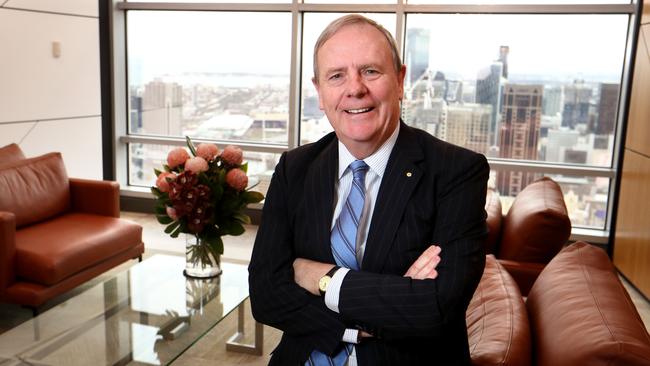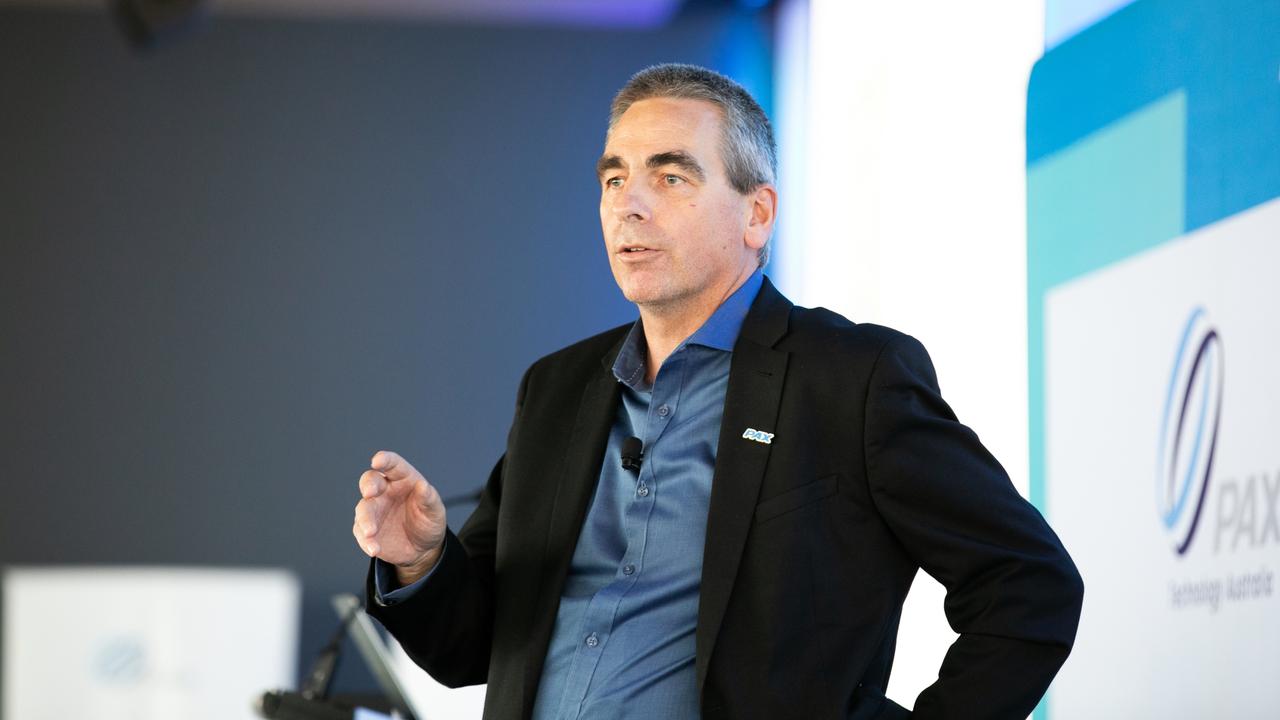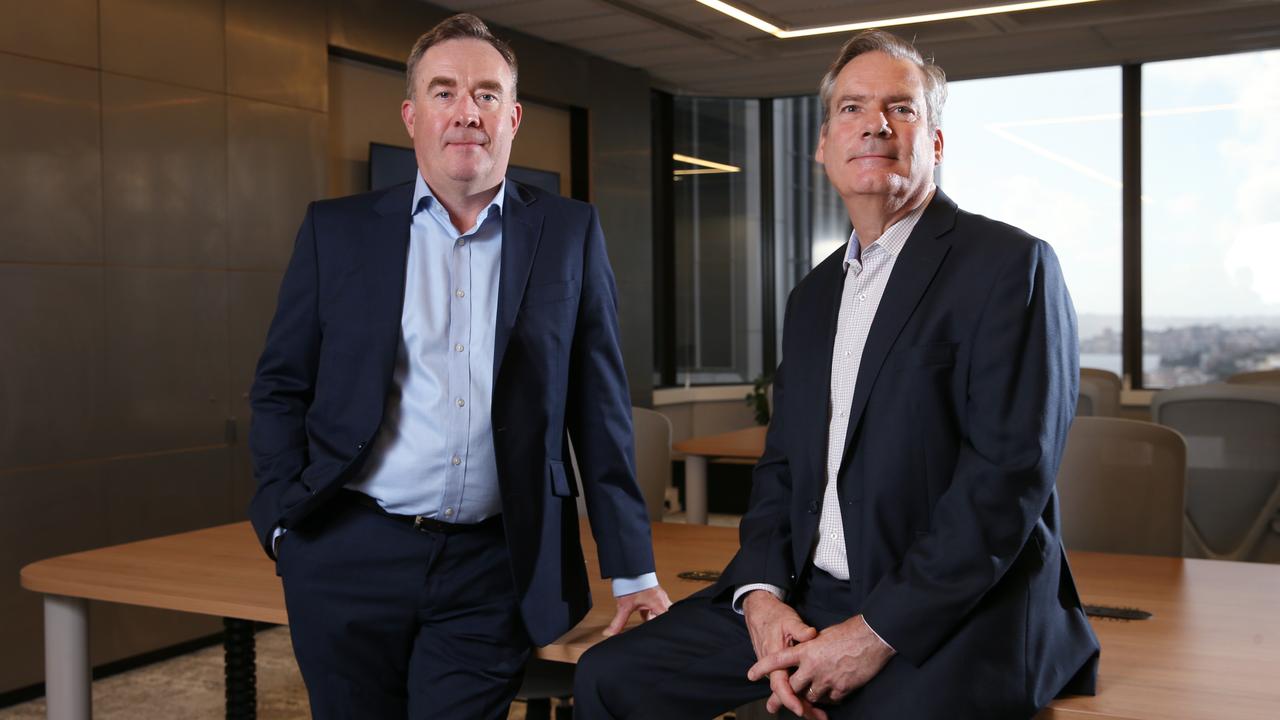Peter Costello celebrates $200bn Future Fund after taking the political knocks
Peter Costello says a Future Fund ‘wouldn’t even come into consideration’ in today’s current high debt environment.

The bruises might have healed but then-Treasurer Peter Costello can recall the knocks from Cabinet colleagues who thought the whole idea of a Future Fund to meet unfunded public service liabilities was an elaborate form of political suicide.
Mr Costello, chair of the fund since 2019, sums up the position taken by John Howard in two words: “Not supportive.”
“Saving to strengthen the balance sheet might be more responsible, but if you’re in politics, spending a surplus to get votes is much more attractive,” he says.
“In the current (high debt) environment, it wouldn’t even come into consideration.
“But even back then, it was a hard thing to get support for and set up, and then to seed it, and then to protect it from being raided.”
On Monday night, about 80 guests celebrated the 15th anniversary of the Future Fund’s formation at its new offices in Collins Street, Melbourne.
They reminisced that in May 2005, when the Howard government announced its intention to establish the fund, it was nothing more than an idea: no staff, no precedent in Australia and, most compellingly, no funds to invest.
The fund now boasts $204bn in assets, returning an average of 10.8 per cent a year over the last decade and earning more than $143bn on the $60.5bn in seed capital contributed by the government.
Unlike the easy money that flows into superannuation funds from the super guarantee charge, not a single further dollar has been contributed to the Future Fund, apart from budget surpluses at the time and proceeds from the Telstra privatisation.
Those with longer memories on Monday night recalled there were several catalysts for the creation of the fund – the landmark Intergenerational Report in 2002, and the zero net-debt position of the commonwealth.
The underlying message from the report was confronting.
It predicted that, no matter how well future governments handled the issues of the day, the ageing population would put an enormous strain on the budget by the 2040s because there would be insufficient working taxpayers to support those who had retired.
The more immediate challenge was almost the reverse, with the future of the bond market and the stability of the financial system in focus as the government continued to post surpluses.
Financial markets were unnerved because they needed active trading in Australian government securities to underpin and price the debt market.
Ultimately, the issue was resolved in the 2003 budget when Mr Costello announced that the bond market would remain open.
The decision meant that an asset fund would have to be created to support the rapidly growing, $84bn in unfunded public service super liabilities.
In the lead-up to the 2004 federal election, Mr Costello unveiled plans to launch the proposed asset fund, to be called the Future Fund.
“It was never thought that the (capital contribution) would be a one-off; it was the policy of the Liberal Party and the Labor Party that there would be annual contributions,” he says.
“But of course there’s been no budget surplus since 2007-08, so not a dollar more has gone in.”
As for the Intergenerational Report, it has proved to be remarkably prescient about the huge draw on the budget from spending on aged care and healthcare.
Mr Costello says we are now seeing the report’s forecast unfold before our eyes, particularly in the aged care system.
No-one should be surprised, he says, and it will only become a bigger issue in the 2030s and 2040s.
The main concern of the Future Fund’s original sponsor has always been a huge raid on its tantalising riches by the government of the day.
To counter this, legislation was enacted and a board of guardians appointed to maintain the fund’s independence.
While the government appoints the guardians and sets the investment mandate, it cannot direct how the fund invests.
As national debt spirals towards $1 trillion, the growth in the fund since its formation has at least provided some balance-sheet ballast to support the exponential growth in liabilities.
Mr Costello is convinced that it’s now a permanent part of the institutional landscape.
“I think so – it’s our largest financial asset; in fact, it’s the only one of any substance,” he says.
Liquidation of the fund would serve no useful purpose.
The commonwealth’s net assets would be the same, and the fund currently earns a handsome premium to the servicing cost of any retired debt.
As for the unfunded super liabilities, they’re now valued at about $250bn, so the gap has narrowed.
Most of the growth in liabilities has been in the military super scheme, which remains significantly underfunded because it covers death and disability as well as pensions.
“I think on any sensible financial analysis, the fund is here to stay until the liabilities have peaked, which will be well after 2030, and while it returns better than the long-term bond rate,” Mr Costello says.
“So you’d think it will be around for at least another decade, and financially it would make sense to be around in perpetuity.”



To join the conversation, please log in. Don't have an account? Register
Join the conversation, you are commenting as Logout